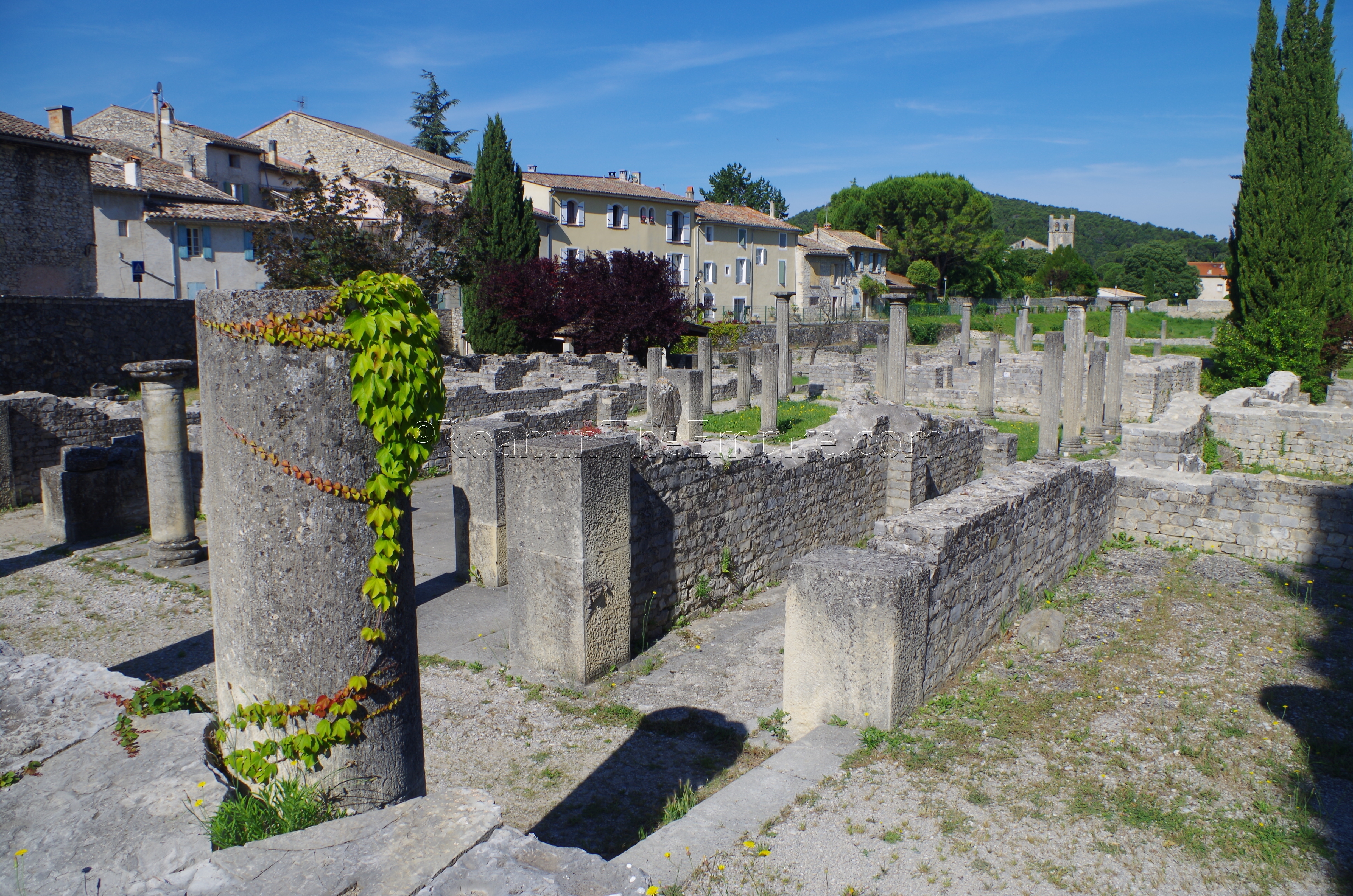
Most Recent Visit: June 2018.
The town of Vaison-La-Romaine, situated along the Ouvèze River in the French department of Vaucluse, owes more than just its modern name to the Roman past. In the Roman period, the settlement was called Vasio Vocontiorum (possibly fully Vasio Julia Vocontiorum), which provides the origin of the modern town’s name, Vaison. The uncovering of extensive Roman remains here in the early 20th century, perhaps the most extensively excavated site in France, earned the town the extension of “La Romain”. The settlement here was in the territory of the Vocontii tribe, and a Gallic oppidium settlement seems to have existed in the area as early as the 4th century BCE. The Vocontii were defeated during the campaigns of the consul Marcus Fulvius Flaccus in 125 BCE and the proconsul Gaius Sextius Calvinus in 123 BCE. The territory of the Vocontii subsequently came under control of the Romans at the conclusion of the campaigns in 118 BCE.
Like many of the tribes in the region, the Vocontii were granted a certain amount of autonomy and essentially operated normally. Vasio Vocontiorum seems to have become one of two chief towns of the Vocontii, which is unusual in that it was located on the fringes of the tribes territory, rather than more centrally, and was not on the path of any major trade routes. The Vocontii rebelled sometime during Marcus Fonteius’ time as governor of Gallia Transalpina in the 70’s BCE, probably in reaction to the mismanagement of the province for which he was later accused, but by 60 BCE seem to be formally allied with Rome. The Vocontii are mentioned briefly by Caesar in his Gallic Wars, but they do not seem to play any major role in any of the actions. Both Pompey and Caesar conferred citizenship to some of the leading citizens of the tribes, and Pompey gave them favored status as a civitas foederata.
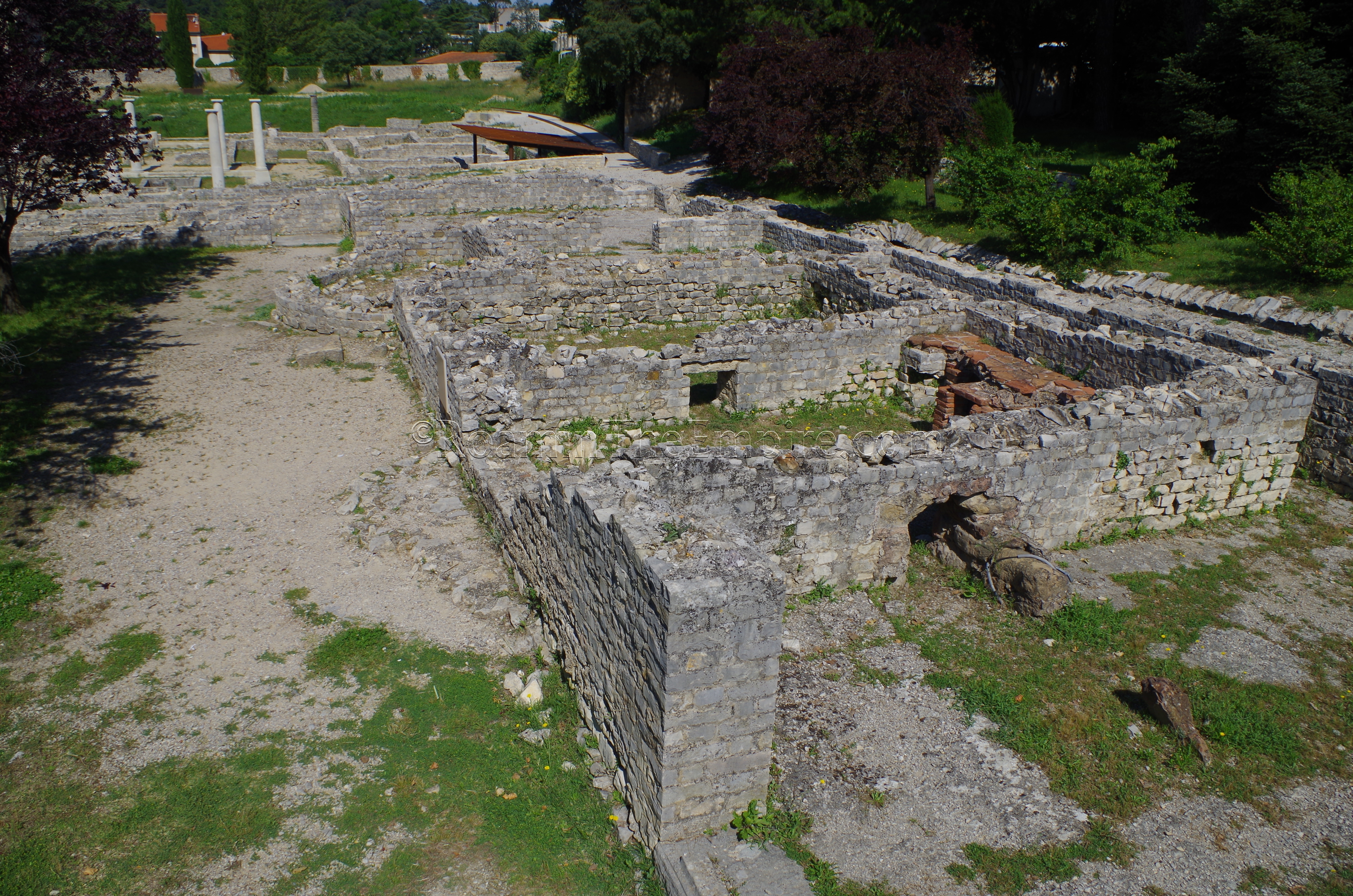
In the mid to late 1st century BCE, the city experienced growth and building projects. Despite the strong presence of Rome following the conclusion of the Gallic Wars, the construction techniques and layout of the town in the late 1st century BCE seems to be more Gallic than Roman. By the time Augustus came to power, Vasio Vocontiorum had become the political center of the Vocontii civitas and construction began to follow a more orthogonal, Roman plan. Pomponius Mela mentions Vasio Vocontiorum as being among the wealthiest cities in Gallia Narbonensis by the middle of the 1st century CE. A number of prominent Romans were born there in the 1st century CE including the historian Gnaeus Pompeius Trogus (whose father was among those given citizenship by Pompey), the consul Lucius Duvius Avitus, and Nero’s praetorian prefect, Sextus Afranius Burrus. It is also possible that the historian Tacitus was born in Vasio Vocontiorum.
Vasio Vocontiorum seems to have been sacked in the invasions of the late 3rd century CE, but was not abandoned. Unlike some other settlements that met the same fate in Gallia Narbonensis, rebuilding seems to have occurred following the attacks on the city, and it appears to be the location of the primary center of occupation until at least the 6th century CE. Following that, however, most of the population seems to have shifted to the medieval town location on the hill on the south side of the Ouvèze River, though the Roman city was not totally abandoned.
Getting There:
Vaison-la-Romaine is a relatively modest city, and as such it is not on a train line, making getting there a little less convenient. There is a bus line that runs from the main train station (Gare SNCF) in Orange and terminates in Vaison-la-Romaine. The bus currently has 10 departures daily (except Sundays, when there are only two) in each direction and takes about an hour each way. The current schedule can be found here. The price for each ride is 2.60 Euros. The other option, which I employed on my trip there, is private transportation. In that case, there is free parking near the cathedral, which is only a 5-10 minute walk to the city center and the majority of the Roman remains in the town. Market day in Vaison-la-Romaine is Tuesday, so, expect parking to be at a premium on that day.
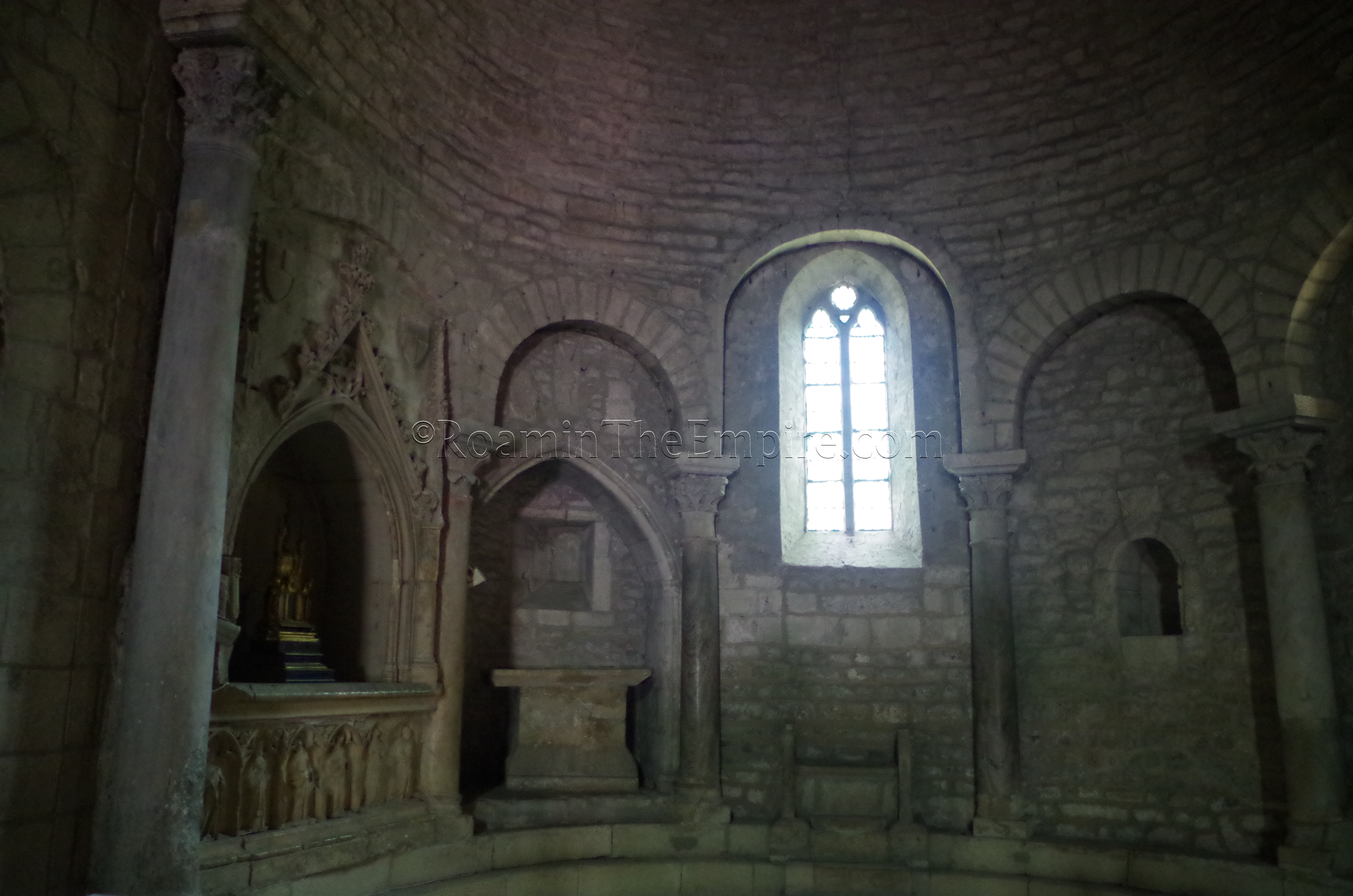
Some remains of Vasio Vocontiorum can be found at the Cathédrale Notre-Dame-de-Nazareth de Vaison, west of the main archaeological areas of the town. Finding hours for the cathedral is rather difficult, there were hours posted for April through September when I visited, noting the hours as being daily from 9:15 to 18:15. Those hours probably generally extend through most of the year, but, being a church, are subject to variation according to festivals, holidays, and services. There is no admission for the church. The apse of the cathedral apparently reuses a number of Roman columns spoliated from the remains of Vasio Vocontiorum. In the cloister of the cathedral, there are other elements including pieces of sarcophagi that are also, presumably, from the remains of the Roman city. In the nave of the cathedral, a few of the columns have been excavated down to their bases, a significant depth below the modern floor, which may be the level of the original church, which is believed to date to the 6th century CE, though there was likely an early pagan temple located below this level.
Much of what remains of Vasio Vocontiorum is contained within two archaeological parks adjacent to each other on opposite sides of Avenue Général de Gaulle. The La Villasse (west) and Puymin (east) archaeological parks are accessed with a single ticket and are served by a single ticket office at the Puymin entrance off Rue Bernard Noël. The sites, and the museum located in the Puymin archaeological park, are open from 9:30 to 18:30 every day from June to September and in April and May the hours are 9:30 to 18:00. In March and October the hours are 10:00 to 12:30 and 14:00 to 17:30, while in November, December, and February, the hours are 10:00 to 12:00 and 14:00 to 17:00. The sites are closed for all of January. Admission to the archaeological parks is 9 Euros.
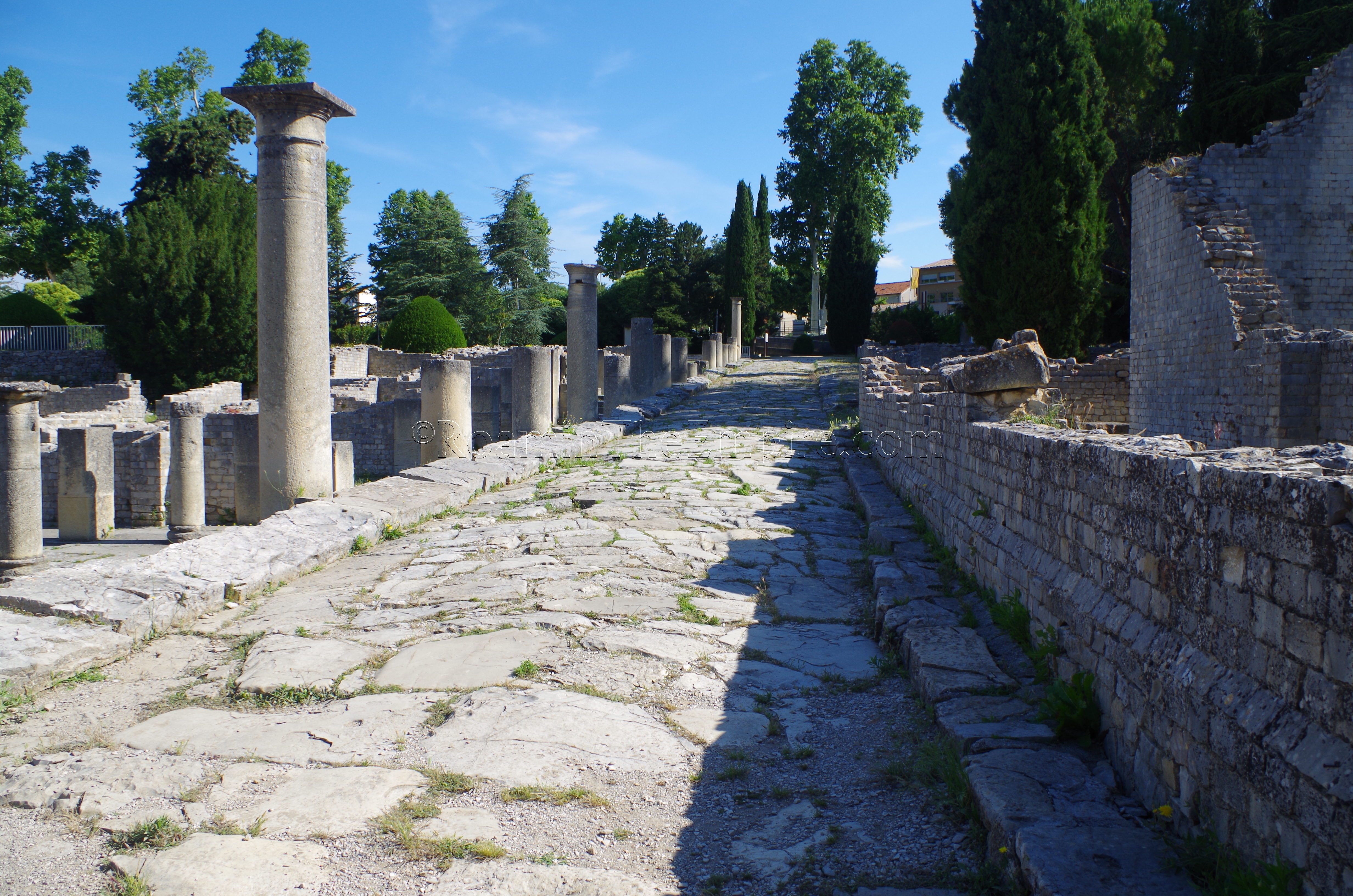
La Villasse
The La Villasse park seems to be the lesser visited of the two. I visited that park at opening time, and only saw a couple other people the entire hour or so I was there. I had the whole thing to myself for probably at least the first 20-25 minutes or so. Even when going by it later in the day, there were not very many people, though neither park was ever really very crowded. This is probably due to the fact that the Puymin park has the big draws, the museum and theater, while La Villasse is mainly residential structures. I picked La Villasse to visit first because I thought it would take less time (which it did) and so I could control my schedule a little better by visiting it first, and I also relished the thought of having it completely to myself for a little bit.
Upon entering the La Villasse section of the archaeological area, which required a code from the ticket office, since there was no manned entrance to this park, one is greeted by a significantly sized cardo through a commercial area lined with shops. At the far end of the street, to the south, is a partially excavated 1st century CE building that was originally identified as a basilica. Additional exploration outside the bounds of the archaeological park have revealed features of a bathing complex; which this building is now identified as being a part of.
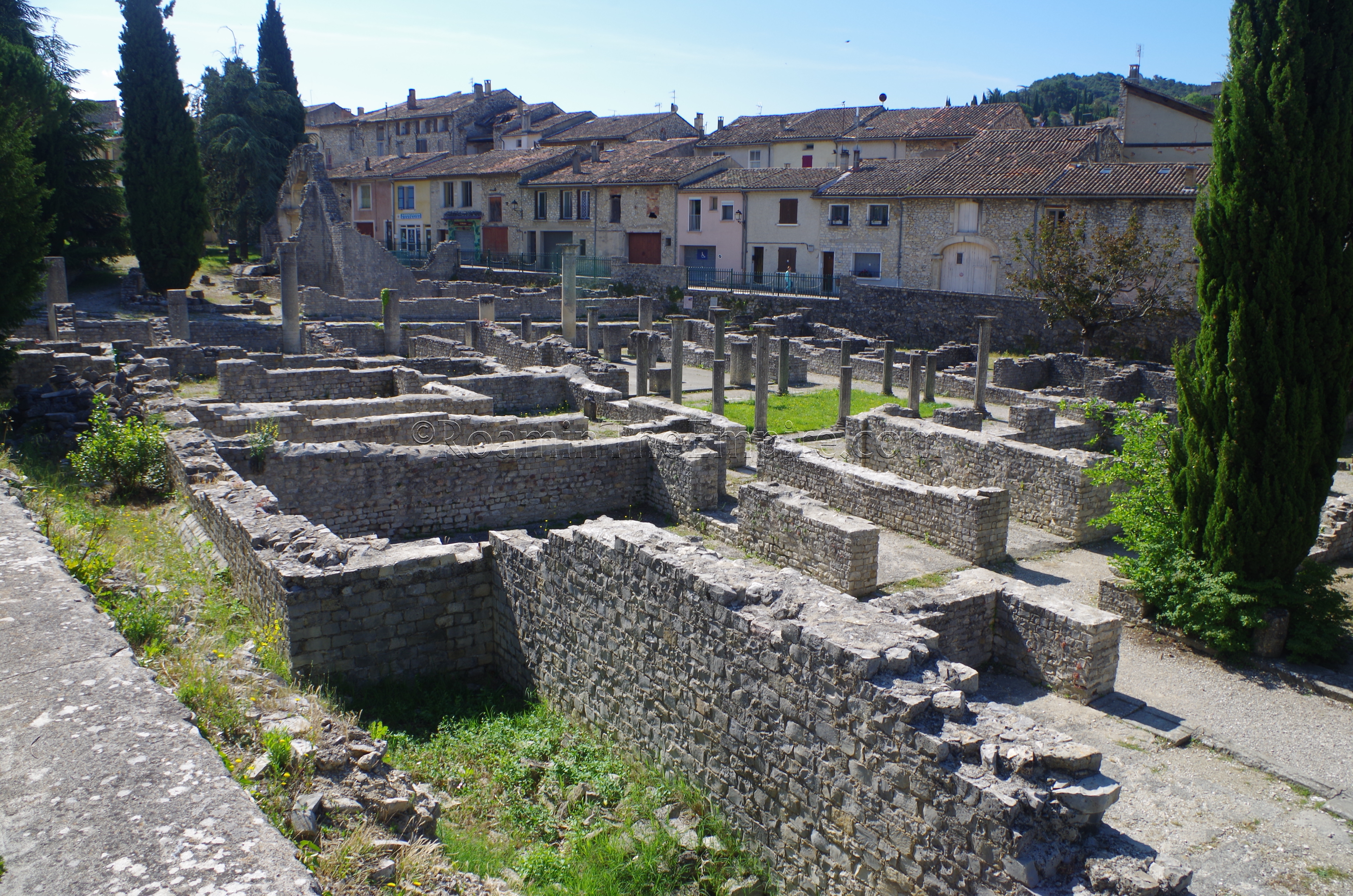
Much of the rest of La Villasse is composed of two large houses, the Maison du Buste en Argent (House of the Silver Bust) and the Maison au Dauphin (House of the Dolphin). There are smaller portions of two other houses as well, the Maison aux Animaux Sauvages (House of the Wild Animals) and Maison à Atrium (Atrium House). The largest of these houses, the Maison du Buste en Argent, is immediately to the west of the road through the commercial district and covers nearly 5,000 square meters. The exact nature of the house is somewhat unclear; it was originally thought to be a residence, but recent interpretations have suggested it may have been some sort of meeting place for a collegia. Still too, it may be a combination of a private house with a public space that was rented out to groups. The northern part of the structure, which was built in the 1st century CE and destroyed by fire in the 3rd century CE, seems to have rooms that may have been devoted to imperial cultic practices, suggesting some sort of non-domestic use. The significant bathing complex to the north of the portico garden/palaestra seems to also to have been a public bathing complex built around 10 to 20 CE, but then incorporated into the Maison du Buste en Argent sometime toward the end of the 1st century CE. The eponymous silver bust that gives the house its name is on display in the site museum in the Puymin park.
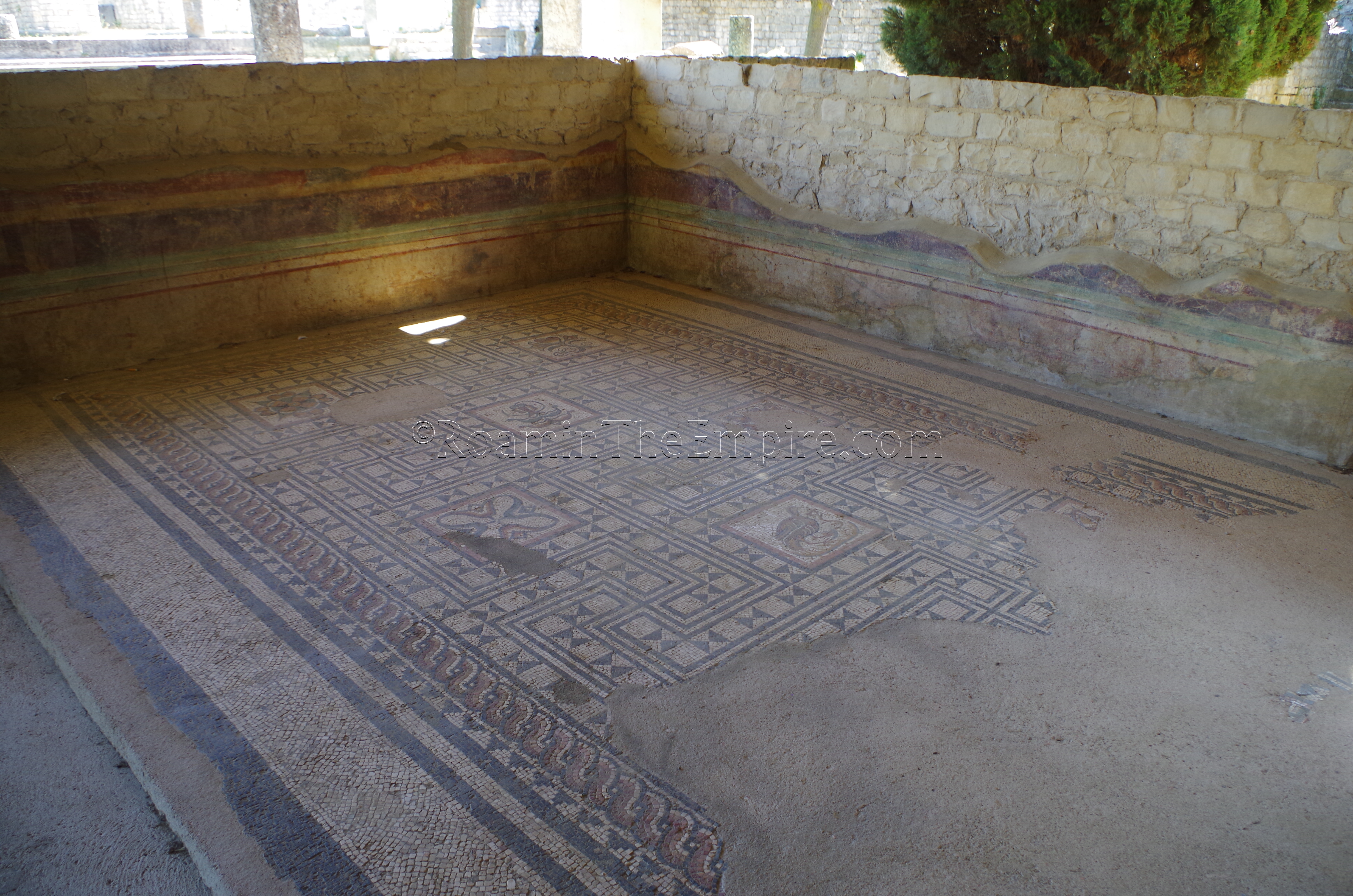
To the south of the Maison du Buste en Argent are the small section of remains from the Maison aux Animaux Sauvages. Just a few rooms from this house have been excavated, but among them are some fairly well preserved mosaics that can be viewed, as well as a bit of wall painting remaining. Directly to the west of these few rooms are another few rooms from the Maison à Atrium, of which there is nothing of note to mention.
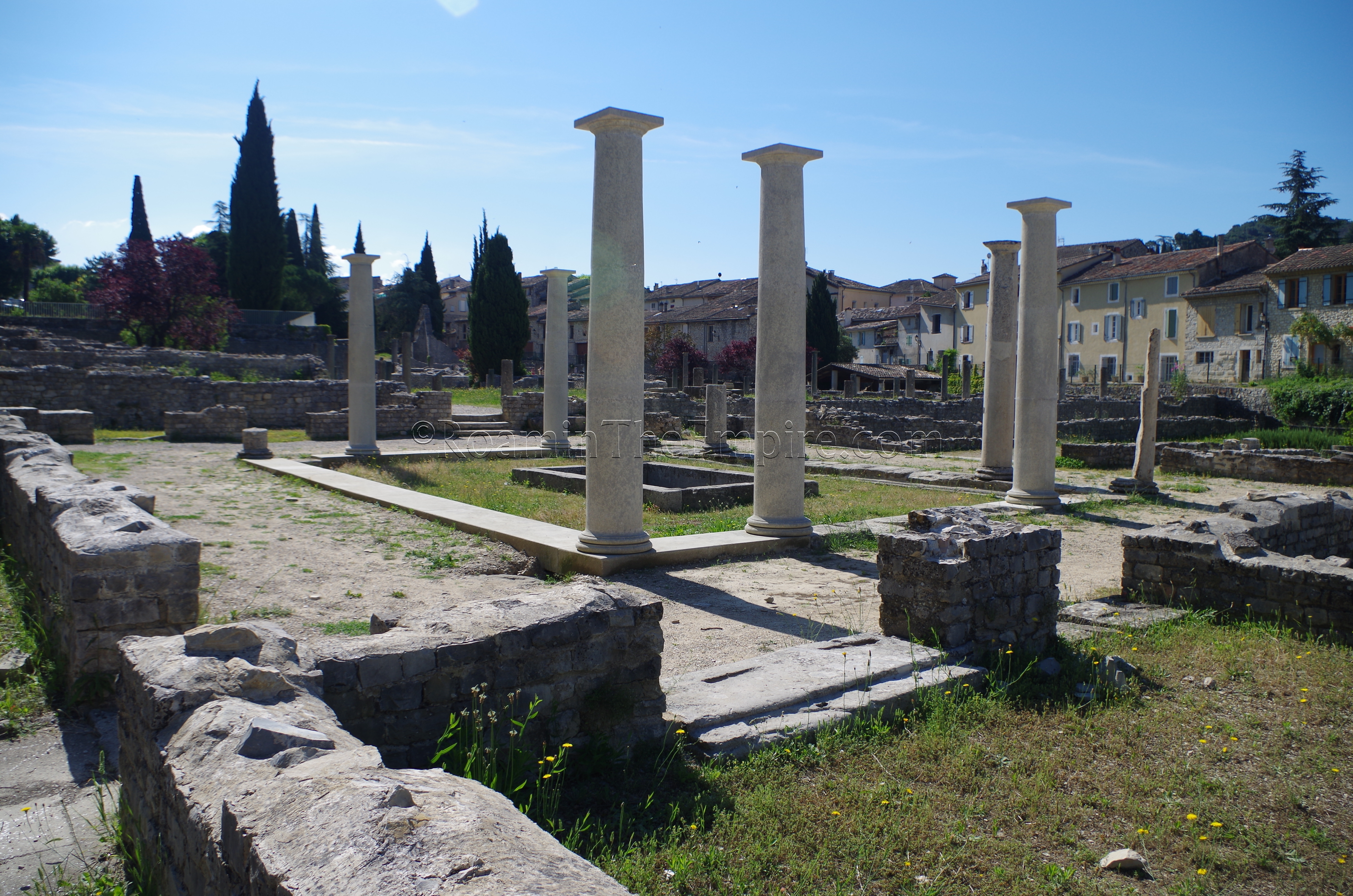
The other large property in the La Villasse archaeological area is the Maison au Dauphin. Quite a bit smaller than the Maison du Buste en Argent, the Maison au Dauphin is still pretty sizeable. This house has a more traditional type floor plan compared to the other sprawling residence, with the core of the house being laid out around an atrium. There is a large garden area in the southern part of the residence with a fountain that still has intact revetment. In the northern part of the house is a small bathing area.
Continued In Vasio Vocontiorum Part II
Sources:
Bromwich, James. The Roman Remains of Northern and Eastern France: A Guidebook. London: Routledge, 2003.
Cicero, Pro Fonteio.
Pliny the Elder, Naturalis Historiae, 3.37.
Stillwell, Richard, William L. MacDonald, and Marian Holland. McAllister. The Princeton Encyclopedia of Classical Sites. Princeton, NJ: Princeton U Press, 1976.
Strabo, Geographica, 4.6.4-5.


